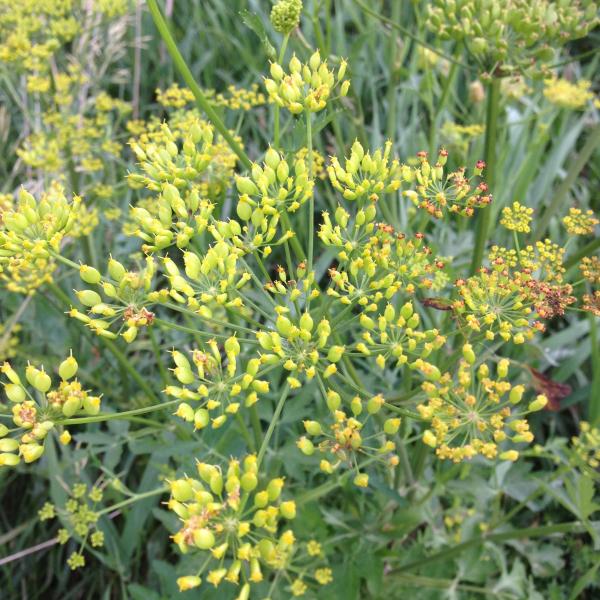
News Source
Article from NY state
"An attractive yellow flower blooming along Southern Tier highways and in open areas is related to the giant hogweed and should be avoided, the state Department of Environmental Conservation advises.
The wild parsnip has expanded its range in recent years, and while not as dangerous as the giant hogweed, which can severe burns and blisters, is still not to be trifled with.
“I travel all over Cattaraugus County, and I see more of it all the time,” David Pawlawski, a state Department of Environmental Conservation regional forester, said Friday.
The DEC maintains a giant hogweed hotline at (845) 256-3111 [this is for NY state], and property owners often mistake other plants, including wild parsnip, for giant hogweed, Pawlawski said.
“(Wild parsnip) seems to be spreading,” he said “You are seeing more along the roads and in the ditches.
“It’s fairly visible at this time of year and easy to identify.”
People who have collected wildflowers along the roadside and happened along the wild parsnip will find that their skin will have mild burns where they touched it. It is not as severe as the burns from giant hogweed.
“You may get burned from wild parsnip, but not as badly as from giant hogweed,” Pawlawski said. “You have to respect it. People who are running into it should be able to recognize it and protect themselves.”
There are giant hogweed look-alikes like Angelica and wild parsnip, which are all members of the carrot family, Pawlawski said. People reporting to the giant hogweed hotline often mistake them, he added.
There seems to be more reports of giant hogweed in certain areas of Erie County than in the Southern Tier, Pawlawski said.
While he said he wasn’t giving advice on how to rid wild parsnip from an area a property owner needs to access, Pawlawski said DEC crews wearing protective clothing and gloves often use a three-pronged approach in eradicating giant hogweed, which should work for wild parsnip as well.
Cutting off the flower heads before the seeds drop to the ground is one method for dealing with a small number of plants. Also, digging them up by the roots is another method. Use protective gloves,” he said.
If there are hundreds of plants, herbicides may be needed. “The seed can remain viable for years in the soil,” Pawlawski said. “Roadside mowing doesn’t seem to eradicate it. Depending on when you mow, the seeds can spread.” "
Article Credit: Rick Miller, Olean Times Herald
Photo Credit: E. Spinney, wild parsnip